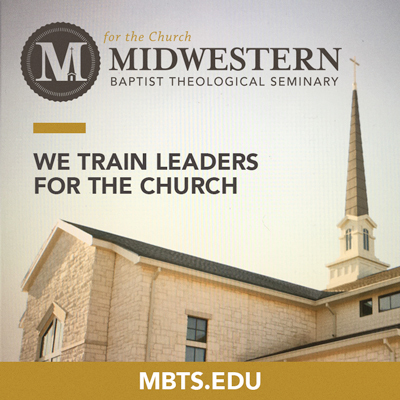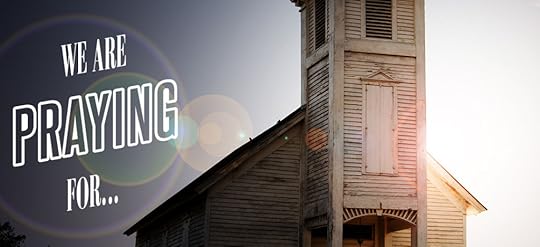Thom S. Rainer's Blog, page 120
May 30, 2019
Seven Things a Website Should Communicate When a Church Is in Revitalization – Revitalize & Replant #095

SUBSCRIBE TODAY:
iTunes • RSS • Stitcher • TuneIn Radio • Google Play • Spotify
Church websites play just an important role in church revitalization. Today we discuss some basic tips on how to best use your church’s website to help in revitalization.
Episode Highlights:
The first place a prospective guest visits is your church’s website. It needs to be updated and mobile friendly.
Stock photos are ok for your church website if you need them, but don’t use photos which don’t represent what your church really is.
Church website text needs to speak to guests. Cut down on or eliminate church insider language.
Remember: the primary audience of your church’s website is potential guests. Focus your content on them.
The seven website tips we discuss are:
Quality is still necessary.
The site should honestly reflect the church as it is today.
The website provides a good opportunity to invite guests and the community to join the revitalization efforts.
Church website 101 still applies: time of services; physical address; etc.
The site provides an opportunity for others to give toward revitalization.
Keep the site updated!
Remember the priority of guests at your website.
Resources mentioned in this episode include:
WordPress.org
Squarespace.com
Wix.com
Episode 213 of Rainer on Leadership with Rich Birch
Online Guest Registration Forms
RevitalizeBundle.com
ChurchAnswers.com
Find more resources at the Revitalize & Replant page at ThomRainer.com

Revitalize & Replant is sponsored by the North American Mission Board and ChurchReplanters.com. More than 10% of churches in North America are at risk of closing and the North American Mission Board is committed to reversing this trend by decreasing the death rate of existing churches while simultaneously increasing the birth rate of new churches. To learn more about what it means to become a replanting pastor or to explore resources for replanting and revitalization in your own church, visit ChurchReplanters.com.
Submit Your Question:
Do you have a question about church revitalization or replanting for us to use on the podcast? Visit the podcast page to submit your question. If we use it on the show, you’ll get a copy of Autopsy of a Deceased Church and Reclaiming Glory.
May 29, 2019
Eight Reasons Some Pastors Aren’t Ready to Lead Church Revitalization

Eight Reasons Some Pastors Aren’t Ready to Lead Church Revitalization
It usually takes a long time
It requires facing reality
It means the pastor could lose his job
It often requires asking for help
It requires a thick skin
It means you may hurt some people you love
It requires perseverance and tenacity
It means taking risks
Some highlights from today’s Rainer Report:
It’s rare for a church revitalization to take less than 3-5 years. It takes time.
Revitalization requires a church to face reality and make adjustments.
Leading a church to revitalization requires humility by the pastor and the congregation.
Revitalization will cause hurt to some church members because it requires them to change.
May 28, 2019
Update on the Early Launches of Pray and Go – Rainer on Leadership #540

Podcast Episode #540
SUBSCRIBE:
iTunes • RSS • Stitcher • TuneIn Radio • Google Play • iHeart Radio • Spotify
When Pray and Go launched earlier this year, we were excited about the potential it had for creating an outward focus in churches. The early reports are strong indicators that this is happening in churches across the country.
Some highlights from today’s episode include:
Pray and Go offers an easy on-ramp for churches who are looking to be outward focused in a prayerful way.
It’s one thing to think you’re a welcoming church, it’s another thing to actually become one.
When a church’s culture shifts outwardly, the bickering and fighting about internal issues decreases dramatically.
Culture change in a church takes time. It doesn’t happen overnight.
The 10 updates we discuss are:
More leaders looking for consistency rather than splash.
Churches make certain they honor local laws and expectations.
The church members are already surprised how many homes they can pray over.
“Feet on the ground” is changing culture.
Many pastors making really wise adjustments.
Common comment: “We are determined to be doing Pray and Go over the next several years.”
Culture is shifting even in the early stages.
Administrative help is critical.
“Pray and walk, don’t knock and talk.”
Low barrier to entry is critical.
Resources mentioned in today’s podcast
Pray and Go
Rainer on Leadership is a member of the LifeWay Leadership Podcast Network
Episode Sponsors
 Vanderbloemen has been serving churches for nine years, but did you know that Vanderbloemen also serves Christian schools, nonprofits, and Christian businesses? So if you’re listening, and you know a Christian school, nonprofit, or values-based business that is hiring, contact our friends at Vanderbloemen for your staffing needs.
Vanderbloemen has been serving churches for nine years, but did you know that Vanderbloemen also serves Christian schools, nonprofits, and Christian businesses? So if you’re listening, and you know a Christian school, nonprofit, or values-based business that is hiring, contact our friends at Vanderbloemen for your staffing needs.
For more information, visit Vanderbloemen.com.
 Today’s episode is sponsored by Midwestern Baptist Theological Seminary. Be sure to check out Midwestern’s Doctorate of Ministry Degree. The D.Min. is an advanced degree preparing students for leadership in local churches and denominational service. It is also fully attainable in hybrid format which means you don’t have to move to pursue the degree.
Today’s episode is sponsored by Midwestern Baptist Theological Seminary. Be sure to check out Midwestern’s Doctorate of Ministry Degree. The D.Min. is an advanced degree preparing students for leadership in local churches and denominational service. It is also fully attainable in hybrid format which means you don’t have to move to pursue the degree.
Find out more at mbts.edu/dmin.
Feedback
If you have a question you would like answered on the show, fill out the form on the podcast page here at ThomRainer.com. If we use your question, you’ll receive a free copy of Scrappy Church.
May 27, 2019
Should a Church Show Individual Pastor and Staff Salaries in the Budget?

This question comes to the Church Answers’ team and me a few times a month. It often evokes some pretty strong emotions. Can a church member (or, in some cases, guests) look at a church budget and know exactly what everyone on church staff earns?
The tension is between transparency and misunderstanding. On the one hand, transparency is usually a good default posture. Especially in congregational polity, church members have final authority over major decisions. It just makes sense they should have visibility to pastor and staff salaries.
On the other hand, putting detailed staff salaries before all the church members can be a problem for the following reasons:
Many church members get confused over the term “packages.” For example, pastors with a “package” of $60,000 may only be making $45,000. The difference is the benefits, such as retirement and health insurance. The package is the total cost to the church. The salary (which sometimes includes housing) is what the pastor actually gets. Many church members view the package as the equivalent of a salary, but it definitely is not. In fact, most church members likely do not know their secular-equivalent package in their vocations. In other words, they do not know the costs of their benefits to their employer.
Visibility of a specific salaries and benefits of pastors and church staff can create tensions among the staff. Can you imagine what it would be like if secular employers posted all the salaries of their employees each month?
Church members may view the specifics of staff salaries and compare them to their own compensation. That too can be a source of tension.
For these reasons, I lean toward not including specific compensation in a budget that is made available to church members on a regular basis. Depending on church polity, a possible approach to the transparency/misunderstanding tension would be:
Include total salaries in a single line on the budget.
Include total benefits in separate line items on the budget. These benefits could be segregated by their respective purpose: health insurance, retirement, etc.
Show expense reimbursements, such as automobile expenses, as separate items. They should not be included as either compensation or benefits.
Have a system in place where church members can view individual salaries by appointment, such as meeting with a member of the personnel committee, elders, or specific group responsible for personnel issues.
To be clear, every church is different, and the polity of a church may be the determinative factor in how these matters are handled. Because we get similar questions quite often, we thought this approach might be helpful for some churches.
This issue usually generates some lively discussion. Let me hear from you.
May 26, 2019
Pray for Saticoy Church

Location: Ventura, California
Pastors: Perry Geue, Fawn Parish, and Rex Holt
Weekly Worship: Saturdays at 5:00 PM, Pacific
Fast Facts: Saticoy Church was founded in 2012 as a small leadership community that takes delight in embracing, encouraging, and praying for emerging and existing leaders. They recently hosted a two-day Influencer’s Intensive with area civic leaders and influencers. Please pray for follow-up from this event and for the participants to know Jesus more fully and more personally. Finally, pray for the weekly worship gatherings at Saticoy Church.
Website: SaticoyChurch.com
“Pray for . . .” is the Sunday blog series at ThomRainer.com. We encourage you to pray for these churches noted every Sunday. Please feel free to comment that you are praying as well.
If you would like to have your church featured in the “Pray for…” series, fill out this information form..
May 25, 2019
Notable Voices and the Week in Review: May 25, 2019

From Around the Web:
10 Suggestions for Making Friends as a Pastor — Brian Autry
In 2015, Chuck Lawless wrote an article called “Five Reason Some Pastors Are Loners – and Why That’s Not Good.” For the past seven years I’ve had the privilege of seeking to strengthen the ministry of pastors, and I count myself among their number. I believe loneliness and friendlessness are a threat to our wellness and to finishing well. So, I’d like to offer ten suggestions for making friends as a pastor:
6 Ways to Increase Corporate Prayer in Your Church — Jonathan Howe
Like anything in a church, prayer will not increase without intentionality. Your church won’t become a praying church by accident. It takes focus, repetition, and a sensitivity to the Spirit to see a vibrant corporate prayer life in your congregation. That intentionality can be fostered through these six acts:
A Question to Ask Every Time You Open Your Bible — Jairo Namnún
There’s one small thing that all of us can and should do if we want to rightly interpret any passage of the Bible. It involves a key and a treasure.
4 Reasons You Should Pray For Your Pastor Daily — Jason Allen
God has been impressing upon my heart the importance of praying regularly for my pastors. They are men called by God to serve his flock, and they regularly bless my family and me. The least I can do is pray for them faithfully. There are many Biblical reasons why we should pray for our pastors, but let us consider just these four.
This Week at ThomRainer.com:

Seven Considerations for the Church Leader Who Receives an Anonymous Letter
Anonymous letters are common. Anonymous letters are painful. Healthy church leaders deal with the pain (if they see the letter), and then they move on…READ MORE

Ten Common Pastoral Care Challenges Pastors Face
MI recently conducted a social media survey where I asked pastors to share their most common pastoral care challenges. The volume of responses was huge, a very impressive number. But even more impressive were the stories of love and concern these pastors have for their congregations…READ MORE
Facility Crises and How Churches Are Responding
by Thom Rainer and Jonathan Howe | Rainer on Leadership
http://media.blubrry.com/thomrainer/s3.amazonaws.com/rainerpodcast/Rainer-on-Leadership/Episode538.mp3
Five Ways to Lead Your Groups to Become Outwardly Focused
by Thom Rainer and Jonathan Howe | Rainer on Leadership
http://media.blubrry.com/thomrainer/s3.amazonaws.com/rainerpodcast/Rainer-on-Leadership/Episode539.mp3
Five Options to Consider If You Are Fed Up with Your Church
by Thom Rainer and Jonathan Howe | Revitalize & Replant
http://media.blubrry.com/revitalizereplant/s3.amazonaws.com/rainerpodcast/Revitalize-and-Replant/RR-Episode094.mp3
May 24, 2019
Five Ways to Lead Your Groups to Become Outwardly Focused – Rainer on Leadership #539

Podcast Episode #539
SUBSCRIBE:
iTunes • RSS • Stitcher • TuneIn Radio • Google Play • iHeart Radio • Spotify
Groups are one of the most important factors in getting people to stick with a church. The community that is built in groups helps your church members become more well-rounded disciples. Today, we discuss five ways to make your groups more outwardly focused.
Some highlights from today’s episode include:
I don’t understand why churches don’t invest more time and resources into the health of groups. Groups are huge factors in the health of churches.
A pastor doesn’t have to run the groups ministry in a church, but the pastor does need to be the champion for groups.
Goals can sometimes become idols, but goals also motivate people to put in the work required to meet them.
There is nothing better for a church to celebrate than someone coming to new life in Christ.
The five ways we discuss are:
Recruit leaders for that purpose
Lead groups to do ministry together
Ask groups to establish faith goals
Talk about it redundantly
Celebrate a lot
Resources mentioned in today’s podcast
Church Answers
Invite Your One
Pray and Go
Rainer on Leadership is a member of the LifeWay Leadership Podcast Network
Episode Sponsors
 Today’s episode is sponsored by Midwestern Baptist Theological Seminary. Midwestern offers more than 25 degrees at both undergraduate and masters level that are fully attainable online. From Business to Bible, Counseling to Christian education, prepare for your future at your own pace and in your own location.
Today’s episode is sponsored by Midwestern Baptist Theological Seminary. Midwestern offers more than 25 degrees at both undergraduate and masters level that are fully attainable online. From Business to Bible, Counseling to Christian education, prepare for your future at your own pace and in your own location.
Find out more at mbts.edu/online.
 Vanderbloemen has 12 Vanderbloemen Differences that allow them to serve their clients better than anyone else. One of those is Theology Matters. Vanderbloemen’s staff has more seminary and theological experience than any other search firm with 250+ collective years of church leadership experience.
Vanderbloemen has 12 Vanderbloemen Differences that allow them to serve their clients better than anyone else. One of those is Theology Matters. Vanderbloemen’s staff has more seminary and theological experience than any other search firm with 250+ collective years of church leadership experience.
To learn more about all 12 of Vanderbloemen’s Differences, visit VanderDifference.com.
Feedback
If you have a question you would like answered on the show, fill out the form on the podcast page here at ThomRainer.com. If we use your question, you’ll receive a free copy of Becoming a Welcoming Church.
May 23, 2019
Five Options to Consider If You Are Fed Up with Your Church – Revitalize & Replant #094

SUBSCRIBE TODAY:
iTunes • RSS • Stitcher • TuneIn Radio • Google Play • Spotify
“What should I do when I’m ready to quit?” That question is faced every week by countless pastors across the country. Today, we cover how best to respond to it.
Episode Highlights:
Most discouragement in ministry is related to issues with people. Start with praying for others when you’re discouraged.
If you’re going to be in ministry, there will be hard days and days where you want to quit.
Use conferences as a time of refreshment. Let outside events energize you for your local ministry.
“Pastors, find your worth in who Jesus is—not in your church size.”
The five options we discuss are:
Pray
Get an outside perspective
Take a break
Go bi-vocational
Quit
Resources mentioned in this episode include:
ChurchAnswers.com
Ridgecrest Conference Center
ChurchReplanters.com
Replanter Assessment
Find more resources at the Revitalize & Replant page at ThomRainer.com

Revitalize & Replant is sponsored by the North American Mission Board and ChurchReplanters.com. More than 10% of churches in North America are at risk of closing and the North American Mission Board is committed to reversing this trend by decreasing the death rate of existing churches while simultaneously increasing the birth rate of new churches. To learn more about what it means to become a replanting pastor or to explore resources for replanting and revitalization in your own church, visit ChurchReplanters.com.
Submit Your Question:
Do you have a question about church revitalization or replanting for us to use on the podcast? Visit the podcast page to submit your question. If we use it on the show, you’ll get a copy of Autopsy of a Deceased Church and Reclaiming Glory.
May 22, 2019
Ten Common Pastoral Care Challenges Pastors Face

Most pastors are amazing. I am honored to serve them, and my appreciation for pastors grows every day.
For example, I recently conducted a social media survey where I asked pastors to share their most common pastoral care challenges. The volume of responses was huge, a very impressive number. But even more impressive were the stories of love and concern these pastors have for their congregations. They want to care for them. They want the best for them. They want to help ease their pains.
So, for the most part, the challenges are not the members themselves, but the capacity to meet all the pastoral needs members have. Here are how the pastors expressed ten of their greatest pastoral care challenges.
Time. The pastoral care needs are always greater than the time available to meet those needs. A number of pastors expressed the tensions of meeting the needs of their own families while trying to meet the needs of the church members.
Expectations. It doesn’t take a new pastor long to discover you can’t meet all the expectations of church members for pastoral care. Pastors always disappoint someone. They typically get criticized for not meeting needs. It is a burden and frustration for these church leaders.
Emotional fatigue. Pastors see a lot of emotional, physical, mental, and spiritual needs. They see the deepest pains and the direst situations. They are often unable to detach from the hurt they see almost every day.
The fix-it syndrome. Many pastors are fixers by nature and personality. But many pastoral care situations defy fixing, at least in the short-term. Pastors, as a consequence, feel both frustrated and hopeless.
Dealing with toxic members. One pastor told me that half his week is spent dealing with toxic church members and the church members hurt by the toxic people. Pastoral care of this nature has little reward to it.
Aging congregations. To be clear, no pastor said anything negative about the pastoral needs of older adults. Their challenge is the increasing number of needs as members age. Many of the pastors are serving congregations where over three-fourths of the active members are 70 and older.
Communication failures. Pastors are sometimes expected to be omniscient. They will obviously miss a hospital visit if they don’t know the person is in the hospital. When one pastor was confronted for missing a visit due to his own lack of knowledge, the church member responded, “Well, you should have known.” Sigh.
Pastor-only pastoral care. Some church members still believe pastors are supposed to do all the pastoral care ministry. The infamous sentence is repeated too often, “That’s what we pay the pastor to do.” Many pastors would like to equip the saints to do the work of the ministry, but those saints will have nothing of the kind.
Hospital visits. Depending on the demographic context, some pastors have to spend most of the day for a single hospital visit. One pastor shared that most of his members go to a hospital in a city almost two hours away. He lamented how little time he had for sermon preparation because he was in the car so much going to the hospital.
The special situation of the bi-vocational pastors. These challenges are exacerbated when the pastor is bi-vocational. Most churches are willing to pay a pastor part-time pay while expecting full-time work.
I love pastors. I love their hearts. I love how they love their churches. Next time you see your pastors involved in some aspect of pastoral care, let them know how much you appreciate them. Many often don’t hear such words of affirmation and encouragement. Your words can make a huge difference to those who serve us so well.
May 21, 2019
Facility Crises and How Churches Are Responding – Rainer on Leadership #538

Podcast Episode #538
SUBSCRIBE:
iTunes • RSS • Stitcher • TuneIn Radio • Google Play • iHeart Radio • Spotify
Almost every church has some kind of facility issue. From being too big or not big enough, facilities rarely match the pace of a church’s growth or decline. Today, we discuss these facility changes and the needs found in many churches across America.
Some highlights from today’s episode include:
You can only lead effectively in the direction in which people are willing to follow.
Deferred maintenance always costs you more than if you stayed on top of the needs when they arise.
If your church facility is extremely underused, consider partnering with a church plant or like-minded ministry. Many of them need space, and some churches have a great amount of unused space.
Be creative in how and who uses your church facility during the week. Use your facility to minister to the community when possible.
The seven points we discuss are:
First problem: deferred maintenance
Second problem: wrong-size worship centers
Third problem: low occupancy
Some churches are merging with churches without facilities
Relaunching may grow
The need for diagnosis
The future of partnerships with businesses
Resources mentioned in today’s podcast
Church Answers
Cool Solutions Group
Tim Cool podcasts
Rainer on Leadership is a member of the LifeWay Leadership Podcast Network
Episode Sponsors
 Vanderbloemen has been serving churches for nine years, but did you know that Vanderbloemen also serves Christian schools, nonprofits, and Christian businesses? So if you’re listening, and you know a Christian school, nonprofit, or values-based business that is hiring, contact our friends at Vanderbloemen for your staffing needs.
Vanderbloemen has been serving churches for nine years, but did you know that Vanderbloemen also serves Christian schools, nonprofits, and Christian businesses? So if you’re listening, and you know a Christian school, nonprofit, or values-based business that is hiring, contact our friends at Vanderbloemen for your staffing needs.
For more information, visit Vanderbloemen.com.
 Today’s episode is sponsored by Midwestern Baptist Theological Seminary. Be sure to check out Midwestern’s Doctorate of Ministry Degree. The D.Min. is an advanced degree preparing students for leadership in local churches and denominational service. It is also fully attainable in hybrid format which means you don’t have to move to pursue the degree.
Today’s episode is sponsored by Midwestern Baptist Theological Seminary. Be sure to check out Midwestern’s Doctorate of Ministry Degree. The D.Min. is an advanced degree preparing students for leadership in local churches and denominational service. It is also fully attainable in hybrid format which means you don’t have to move to pursue the degree.
Find out more at mbts.edu/dmin.
Feedback
If you have a question you would like answered on the show, fill out the form on the podcast page here at ThomRainer.com. If we use your question, you’ll receive a free copy of Scrappy Church.



